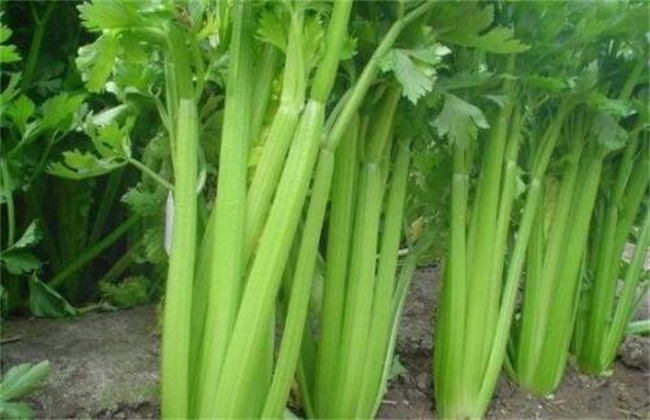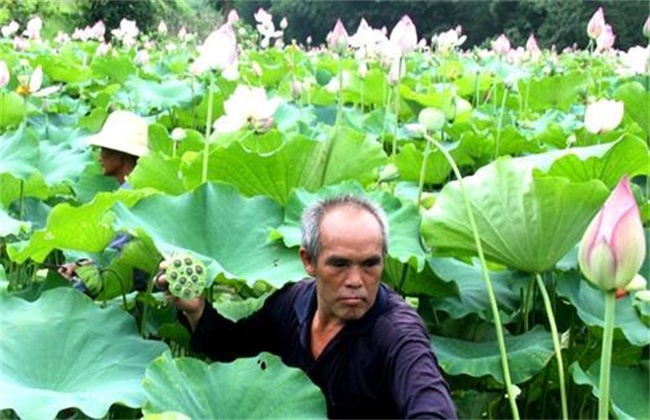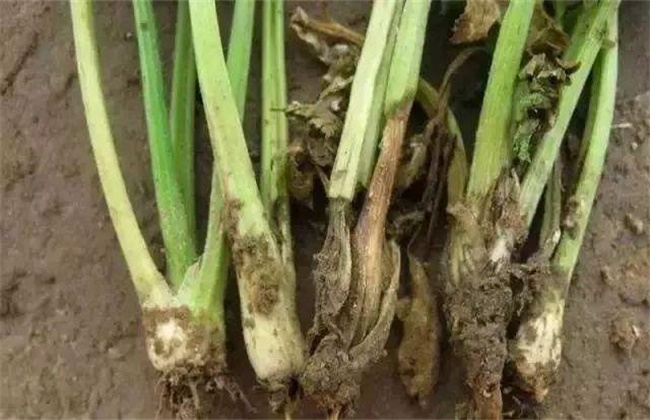Causes of hollowness of celery and its control measures
In the process of cultivation of celery, hollow is a common physiological disease, celery is a solid variety, because of improper cultivation and management, hollow phenomenon will appear. The hollow celery will lead to the decline of quality, and can not be used in serious cases, which directly affects the economic benefits. So what is the cause of celery hollowness? How to prevent it? Come and have a look with the editor.

The cause of celery hollowness
1. Too long growth time and aging petiole
When celery grows for too long, its petiole loses its active cells, and with the decrease of pectin, voids are formed in the cell membrane, so large parenchyma cells between the conducting tissues form voids. The hollow also occurs gradually from the outer leaves to the inner leaves, and this physiological aging phenomenon is generally cultivated on sandy soil.
2. Unfavorable environment
High temperature, lack of water and fertilizer will lead to slow growth or stop of celery, so the petiole is also prone to hollow phenomenon, especially in the lack of fertility or late fat loss. If the cultivation temperature is too low in autumn and winter, it will also suffer frost damage and hollow; if the temperature is too high and grows too fast, the hollow will also occur.
3. Improper management
When the cultivation process, gibberellin dosage is too large, spraying too many times, fertilizer and water can not keep up, there will be hollow.
II. Preventive measures
When planting, it is necessary to apply sufficient base fertilizer and spread it evenly. It is suggested that about 5000 kg of high-quality mature fertilizer should be applied per mu, and seedling fertilizer should be applied in time after planting slow seedlings. Apply 10 kilograms of human feces or fermented urine per mu with water. In the early stage of growth, it is mainly available nitrogen fertilizer, with an appropriate amount of potash fertilizer, timely watering after topdressing, frequent watering with small water and frequent application of fertilizer. If boron deficiency is found, 0.3% murine 0.5% borax solution can be used for foliar spraying, always keep the soil moist during the peak growth period, but do not accumulate water, keep the soil moisture at 60% murine 80%, and pay attention to drainage and waterlogging prevention in summer.
III. Preventive measures
It is necessary to strengthen cultivation management, do a good job in fertilizer and water management, prevent plant aging, avoid drought in the high temperature season, the temperature should not be too high or too low in greenhouse cultivation, the temperature should be released in time when it exceeds 25 degrees, and it should be kept above 5 degrees in winter. When celery is ripe, if you want to delay the harvest, you can first harvest part of the outer leaves, which is an effective measure to prevent aging and hollow, and it can also be harvested in time and supply to the market after storage. In spraying gibberellin, the concentration, dosage and times should be strictly controlled, and attention should be paid to the combination of watering and fertilization.
The above is the introduction of celery hollow causes and control measures, hope to help you, want to know more related knowledge, please follow us.
Related
- Where is it suitable to grow horseradish in China? it is expected to see the middle altitude horseradish in Alishan.
- How to prevent tomato virus disease reasonably? (Control methods included)
- Many people like to plant towel gourd on the balcony. What are the main points of this method and management?
- What crops can chili peppers be mixed with?
- Fertilization techniques and matters needing attention in Tomato
- What are the grafting techniques for peach seedlings in spring?
- Harm and control methods of root swelling disease of Chinese cabbage
- What are the pests of sweet potatoes? How to prevent and cure it?
- Symptoms, causes and Control methods of navel Rot in Tomato
- The cause of "Cucumber rotten bibcock" in Farmers' planting Cucumber and its Control Plan



